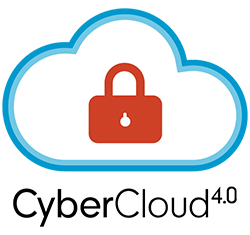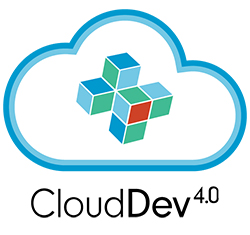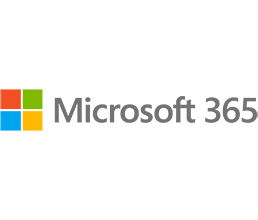
Digital transformation through the lens of COVID-19
Introduction
IN the fall of 2019, most of us would have scoffed at anyone predicting that the next seven months would bring record-breaking unemployment levels, millions of shuttered businesses, the cancellation or postponement of sporting events ranging from high school baseball to the Boston Marathon to the Tokyo Olympics, and over 2 million infections and 115,000 deaths in the United States alone.1 Yet, here we are, trying to make sense of the effects of the COVID-19 pandemic that’s sweeping across the world.
For businesses, one consequence of the COVID-19 crisis has been a dramatic uptick in the use of digital technologies that help reduce face-to-face interactions and safeguard customer and employee health and well-being. These digital technologies include consumer-facing applications such as grocery and food delivery services, business-to-business e-commerce applications, and applications such as videoconferencing that seem to have penetrated the consumer, business, and not-for-profit worlds. Searches for terms such as “contactless” increased 7x between November and late April,2 while the stocks of technology companies aligned with new-found customer health and safety concerns have skyrocketed.3
This accelerated adoption of certain digital technologies raises the question of how this current wave of digital transformation compares to prior (a.k.a., pre-COVID-19) waves.
In discussing the COVID-19 pandemic with senior executives, a recurring theme has been how quickly and severely it has affected organizations, forcing them to respond with extraordinary speed and vigor. “Slow, but steady” doesn’t work, given the dynamics of a pandemic. By contrast, prior waves of digital transformation have included more opportunities for experimentation built around scalable, but carefully planned, pilots.
In a way, the current wave of digital transformation resembles how physicians respond to acute medical conditions—rapid and dramatic interventions designed to stabilize the patient and lessen the immediate severity of the condition. The intervention is often not appropriate for the long term, but absolutely necessary to give the patient a respite and transition to more long-term solutions. Many of us have had the experience of the five-day megadose of azithromycin to combat an acute bacterial infection, with the caution of following the dosage instructions exactly as written if we expect the desired relief.
The expectation with acute medical conditions is that they are temporary, although they sometimes recur or morph into more chronic conditions that are persistent and long-lived. Chronic medical conditions cry out for sustained treatments that patients can tolerate over extended periods of time. Often patients with chronic conditions are never healed, but are able to live comfortably with the appropriate medical treatment and accommodations.
While COVID-19 represents an acute disruption today, it may recur or become a more chronic disruption over time. This increases the challenge for executives who are trying to lead their organizations through complex digital transformation journeys to determine what are the equivalent digital moves of the intensive dose of azithromycin and what are the pivots necessary to respond to persistent and long-lived disruptions (e.g., the shift from on-premise to cloud computing).
A little more than a year ago, we published a book, The Technology Fallacy, which examined the characteristics of organizations that had successfully transformed themselves and their industries through the adroit application of digital technologies—and more importantly, organizational changes. We argued that digital disruption, resulting from new digital technologies, was not just a bump in the road before things went back to “normal,” but a fundamental rejiggering of the world that transported us to a “new normal.”
As we look at what is happening during the current acute disruption caused by COVID-19, we find that many companies have accelerated their digital transformation efforts. Many of our prescriptions developed in the context of chronic disruption have been applicable—perhaps even prescient—for the struggles many companies face in responding to the COVID-19 crisis. But we also find that the COVID-19 crisis is creating a stress test for the investments that organizations made in digital transformation and increasing the importance of certain areas (e.g., technologies that address health and safety concerns). As one interview respondent indicated, “When the tide goes out, you see who’s been swimming naked,” companies that talked big about digital transformation but did little meaningful to accomplish it are being exposed in the current circumstances.
What doesn’t change with acute disruption?
Are digital transformation principles and approaches developed in response to chronic disruption still applicable in the case of acute disruption? We think that they are—and particularly more so.
Cross-functional teaming and agility: In The Technology Fallacy, we noted a strong correlation between the way a company is organized and how well it responds to chronic digital disruption. Specifically, more digitally mature companies are more likely to report being organized around cross-functional teams and these companies are less likely to report that management processes and structures interfere with their ability to work digitally. We also found that digitally mature companies tend to provide those teams with greater autonomy in decision-making, increasing speed and agility.
When we asked interview subjects to explain this connection between cross-functional teaming and digital maturity, we got a number of different answers. Christine Halberstadt, vice president of Strategic Transformation for Freddie Mac, notes that organizing differently allows the company to think differently. Dave Cotteleer, vice president of North America Sales for Harley Davidson, notes that since digital cuts across the entire organization, they need to be organized accordingly. Shamim Mohammad, senior vice president and chief information and technology officer of Carmax, comments that cross-functional teaming allows greater experimentation, since different experiments can be assigned to different teams.4
In our early research into how companies are responding to COVID-19, cross-functional teaming is becoming more essential as organizational silos are broken down to enable the company to respond to the common threat. Companies are often being forced into cross-functional teaming in order to provide a unified and rapid response across the organization, and those teams are increasingly being given greater autonomy out of sheer necessity. Lower-level employees are stepping up to take responsibility in ways that they may have been reluctant to before. All of this can enable the organization to be more agile.
Continual learning: Many companies are ramping up webinars and other means of educating employees. Employees are turning to platforms such as Skillsoft to learn how to manage in this new virtual environment and developing new skills such as data science and coding. Skillsoft has seen a 3x increase in consumption of their products since the onset of the pandemic.5 Further, by being thrust into new challenges and circumstances, many employees are learning on the job. And as organizations are forced to reinvent parts of their businesses, some of them are learning through experimentation and creating new knowledge stores.
Stanford psychologist Carol Dweck studies the difference between fixed and growth mindsets.6 People and organizations with a fixed mindset believe their success or failures stem from their own innate talents or abilities and are primarily the result of how well these innate abilities fit the external environment. People and organizations with a growth mindset, in contrast, believe their success or failure is the result of their own hard work and that they can adapt to unexpected occurrences in the external environment. Consistent with Dweck’s work, we found in our research into digital disruption that companies that believe they will be in a stronger position in the next 10 years largely exhibit characteristics of a growth mindset, and those that believed their organization will be in a weaker position exhibit characteristics of a fixed mindset.7
Likewise, our recent interviews with senior executives suggest that companies that will be negatively impacted the most by COVID-19 will be ones that simply try to “weather the storm” and go back to old, established business models. In contrast, companies and individuals that will likely emerge from this crisis stronger are seeking to develop the digital capabilities necessary to thrive. Mark Onisk, chief content officer of Skillsoft, indicates that in some cases, corporate learning initiatives are becoming part of the glue that holds the social elements of the company together while employees work remotely.8
Mission, vision, and values: A third commonality between how companies respond to acute vs. chronic disruption is the leadership’s ability to clearly communicate a strategic vision for the company. We found a strong association with an organization’s leadership and its digital maturity. In fact, the three most important facets of digital leadership we identified are having a transformative vision, being forward-looking, and being change-oriented. Our recently published report on technology leadership, The kinetic leader: Boldly reinventing the enterprise, underscores this idea, showing that 69% believe future tech leaders need to be change-oriented, have a vision, be agile, and be innovative.9
Having and clearly communicating a strong strategic vision for the company in the midst of both acute and chronic disruption helps employees know how to respond when digital disruption changes the environment. When the old rules are no longer applicable—whether temporarily suspended due to COVID-19 or because technology moves faster than regulation—it’s important that employees know which overarching principles are guiding their work.
A strong sense of purpose can also help motivate employees through times of disruption. Noah Glass, founder and CEO of the digital restaurant platform Olo, notes the importance of this sense of mission when navigating a crisis. He reflected, “Within our mission of helping restaurants better meet the needs of the on-demand consumer, what really came into focus was—like it or not—every restaurant consumer has now been turned into an on-demand consumer. It felt like we represented a broad swath of the industry and supported an area of critical importance to those restaurants. We had a strong sense of mission as a team to be the digital backbone for and support an industry that was experiencing unprecedented challenges and defined as an essential service. It became a rallying cry for our team at a moment when we were experiencing challenges of our own, having to work remote and now manage childcare.”10
What is different when it comes to acute disruption?
Despite these strong similarities in how companies respond to both acute and chronic disruptions, there are also important differences. Many of these come in the form of barriers to digital maturity that simply don’t apply to the response to acute disruption caused by COVID-19. In fact, if there ends up being a “silver lining” to the current crisis, it is that in many companies, the pandemic is ushering in digital changes that were long overdue.
The Knowing-Doing Gap: The biggest barrier we identified in The Technology Fallacy is the “Knowing-Doing Gap,” a term coined by Jeffrey Pfeffer and Robert Sutton more than 20 years ago. Although nearly everyone (87% of survey respondents) “knows” that their industry is going to be disrupted to a moderate or great extent by digital technologies, few respondents (only 44%) feel that their company is doing enough to respond to this disruption.11
Of course, that’s one of the challenges of chronic conditions, particularly if they are asymptomatic in the short term. It is possible to simply ignore it and go on with business as usual, putting off the most difficult and disruptive changes to the future. Acute disruptions, however, are far more difficult to ignore. As various governments issue stay-at-home orders, companies have little choice but to figure out how to work remotely. Many of those that were already working with a combination of colocated and virtual work decided that some employees may never need to be colocated again.12
One chief digital officer we spoke with says that the company has experienced years of digital transformation in the span of a few months, implementing three years of planning since the crisis began. Other respondents indicate similar accelerated timelines for digital plans. A health care CIO we spoke to said she made an entire year’s worth of technology purchases in February 2020 when she began to see how the crisis was unfolding in China and its potential to affect their emergency room staff. A recent survey of CEOs conducted by Fortune magazine and Deloitte showed that 77% of CEOs reported that the COVID-19 crisis accelerated their digital transformation plans.13
Experimentation: Another major barrier we identified with respect to the chronic digital disruption was the willingness to experiment and take risks. In fact, the willingness to experiment is the biggest barrier companies report in responding to chronic digital disruption.
The acute disruption brought on by COVID-19, however, seems to have greatly reduced the resistance to experimenting and taking risks. Ben Waber, president and cofounder of the people analytics company Humanyze, notes that he has been astonished at the extent that executives operating during COVID-19 have been willing to try new things without necessarily being certain of the outcome. Adaptability as an organizational health indicator, particularly during rapid change, can help to support a successful workplace environment.14
Acute disruption has also given greater free reign to innovators within companies. The digital innovation team at a large medical devices company says digital innovation is more possible during COVID-19 because the usual bureaucratic barriers that hinder innovation have been removed as a result of working from home—either through formal removal or by just being able to work around them more easily when not in the office. Indeed, even the US government relaxed data rules to allow health care providers greater leeway to respond innovatively to the novel crisis.15
Leading amid uncertainty: With respect to digital disruption, we advocated the concept of absurdly long-term strategic planning, suggesting managers plan for what is possible among a number of possible futures. One CIO we spoke with notes that scenario planning has been invaluable for helping their organization adapt to a rapidly changing and uncertain environment. Although the company had never planned for this exact scenario of a global pandemic, the exercises that it had performed could be easily adapted to accommodate the new challenges. Indeed, it is often easier to adapt existing plans to a different situation than to develop new plans from scratch.
We were asked recently about whether we still advocate such long-term strategic planning in the midst of the current crisis. Our answer was “no,” because we are likely to experience a decade’s worth of uncertainty in the next 12–18 months. By its very nature, acute disruption creates a much higher degree of uncertainty in the short term than chronic disruption. Managers who had previously avoided absurdly long-term strategic planning may have difficulty handling the uncertainty associated with acute disruption. Managers should develop plans that address multiple possible futures, and when deciding which initiatives to execute, choose the ones that will be most relevant to multiple possible future states.
Next steps: Innovating through disruption
As companies adjust to the COVID-19 world, what are the next steps?
To understand the unique opportunities this situation offers, it’s perhaps worthwhile to look at the story of a previous acute disruption—the 2011 Icelandic volcano eruption that shut down air travel across Europe for a week—and a company’s response to it. KLM Airlines began using Twitter to communicate with customers, since its call centers couldn’t handle the increased load. When the crisis was over, the company largely abandoned the platform and went back to its usual ways of working.16 Six months later, the CEO questioned why the company had done so, when it had learned to operate during the crisis in a way that offered so much value. KLM began investing in Twitter as a much bigger part of its customer service infrastructure. In doing so, it discovered many new challenges that needed to be resolved to make it effective on a permanent basis, such as having a multilingual staff working around the clock. Yet, KLM also discovered new value it hadn’t anticipated from Twitter, such as using the platform as a virtual lost and found to return items left on planes to customers after they had passed through security.17
We are finding two very different attitudes among companies adapting to the current acute disruption—those that are using this time to plan their place in the “next normal” and those that are treading water, waiting for the world to go back to what it was. We expect that the companies that emerge stronger from the crisis are those that innovate through it, using the current crisis as an opportunity to digitally transform their company. Fortunately, there seem to be more leaders in the former category than the latter. Roughly 75% of CEOs indicate that the crisis has created significant opportunities for their companies.18 In doing so, it’s important for companies to critically reflect on what is better about the working environment and what isn’t, retaining the former and abandoning the latter when a return to normalcy is possible.
The rapid shift to working from home is a good example. Many companies are finding that short-term individual performance hasn’t really dipped as a result of COVID-19, leading some companies to declare that employees need never return to the office again. Ben Waber, however, is cautious about relying on only short-term performance data—while Humanyze’s data shows no drop in short-term individual performance, the data also shows that the number of new or casual connections that employees interact with throughout the day has dropped precipitously. These types of casual relationships are often the source of innovation and valuable knowledge flows, potentially presaging the potential impact of working from home on the long-term performance of employees or innovativeness of companies. Finding ways to rekindle those serendipitous connections—whether through returning to in-person work or through creative interventions online—may be a critical factor in measuring organizational health and an indicator that should be used to determine whether to extend the benefits of the crisis and avoid unintended and unforeseen outcomes.
In the same way that a heart attack can serve as a wakeup call and impetus for lifestyle changes for those suffering from chronic heart disease, the COVID-19 crisis and other acute disruptions can serve as an opportunity for organizations to make some fundamental shifts and to implement structures and practices that will enable them to thrive.





Recent Comments